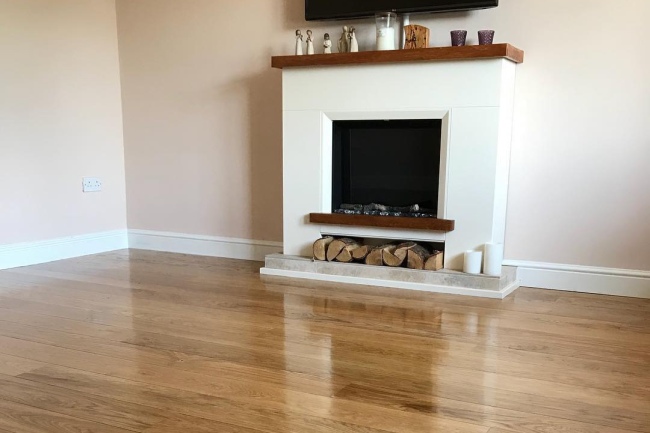Choosing The Perfect Wood Floor Colour To Complement Your Wall Colours
3rd Aug 2023
Selecting the right wood floor colour to complement your wall colours is a crucial decision in interior design. The harmony between these two elements can significantly impact the overall aesthetic and ambiance of your living space. Whether you're renovating, remodelling, or starting from scratch, understanding the interplay of wood floor and wall colour will help you achieve a cohesive and visually appealing home.
In this article, we explore some practical tips to assist you in making an informed decision that suits your personal style and enhances your living space.

Consider the Room's Purpose
The first step in choosing the ideal wood floor colour is to consider the room's purpose. Different rooms have distinct moods and functions, and your wood floor and wall colour choices should align with these objectives. For instance, a serene bedroom might benefit from warm and earthy tones to create a calming atmosphere, while a vibrant living room may welcome bolder colour combinations to promote a lively ambiance.

Determine Your Preferred Colour Palette
Before deciding on wood floor colours, it's important to establish a preferred colour palette for your entire space. Start by assessing the existing wall colours or selecting new ones that resonate with your taste and desired mood. You can opt for complementary colours, analogous colours, or neutral tones, depending on your style and preferences. Understanding colour theory can be a helpful tool in finding harmonious combinations that will make your wood floors and walls complement each other.
Contrast or Cohesion
Once you have your preferred colour palette, you must decide whether you want to create contrast or cohesion between your wood floors and wall colours. High contrast can make a bold statement, where dark wood floors pop against light-coloured walls or vice versa. On the other hand, cohesive colours create a seamless flow between the two elements, promoting a harmonious and balanced look.

Consider the Wood Species
Different wood species have distinct natural colours and grains, and these should also be taken into account when choosing a wood floor colour. Oak flooring, for instance, typically offers warm tones, while walnut can present richer and darker hues. Consider how the wood species will interact with your chosen wall colours and how the grain pattern will add texture to the room.
Test Samples and Lighting Conditions
When choosing wood floor colours, it's essential to examine samples in your actual space and under various lighting conditions. Natural light, artificial light, and even the direction of the room can significantly impact how colours appear. Take time to observe the samples at different times of the day to ensure you're satisfied with your choice in all lighting scenarios.

Opt for Versatility
If you anticipate changing your wall colours periodically or enjoy experimenting with different decor themes, it's best to select a wood floor colour that is versatile and can adapt to various design schemes. Neutral wood tones like beige, light brown, or grey are excellent options for such scenarios as they can complement an array of wall colours and decor styles.

Choosing the right wood floor colour to complement your wall colours is an essential aspect of interior design. By considering the room's purpose, determining your preferred colour palette, and deciding between contrast and cohesion, you can achieve a harmonious and visually appealing living space. Remember to factor in the wood species, test samples under different lighting conditions, and opt for versatile options for added flexibility.
Looking for some advice on the finishing of your solid or engineered oak flooring? Drop us an email or give us a call on 01538 304584.




Add a comment